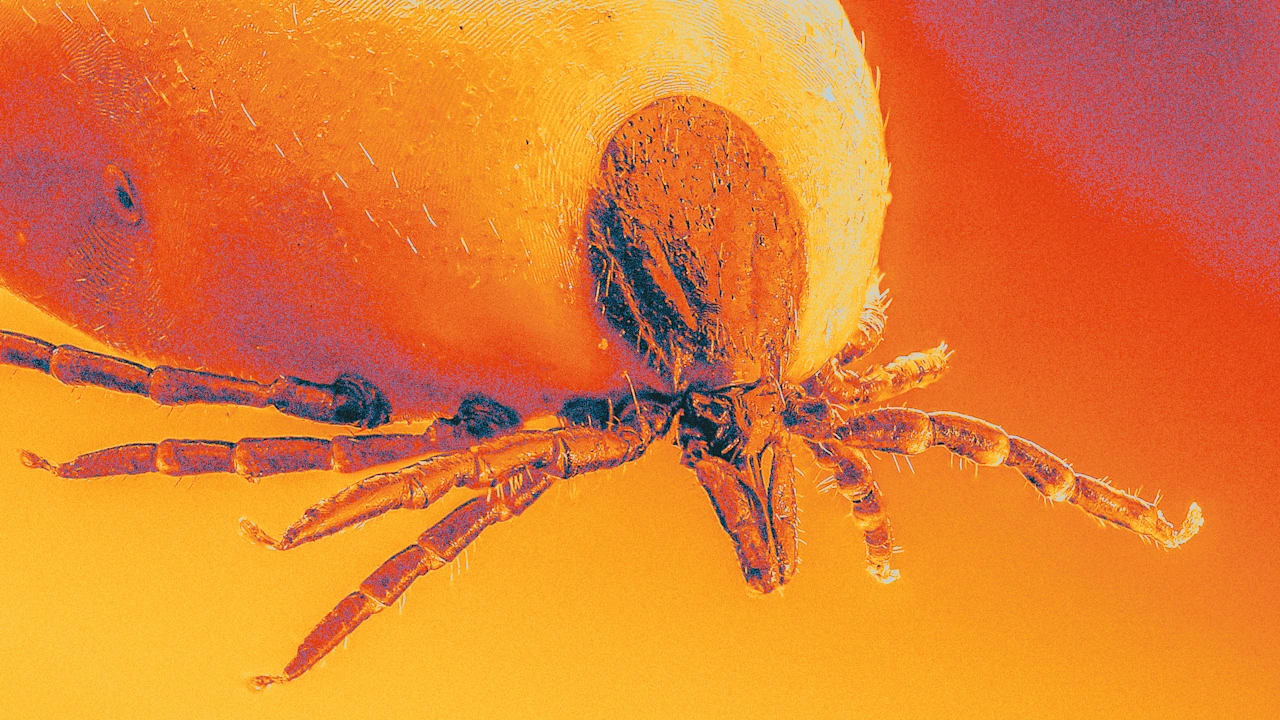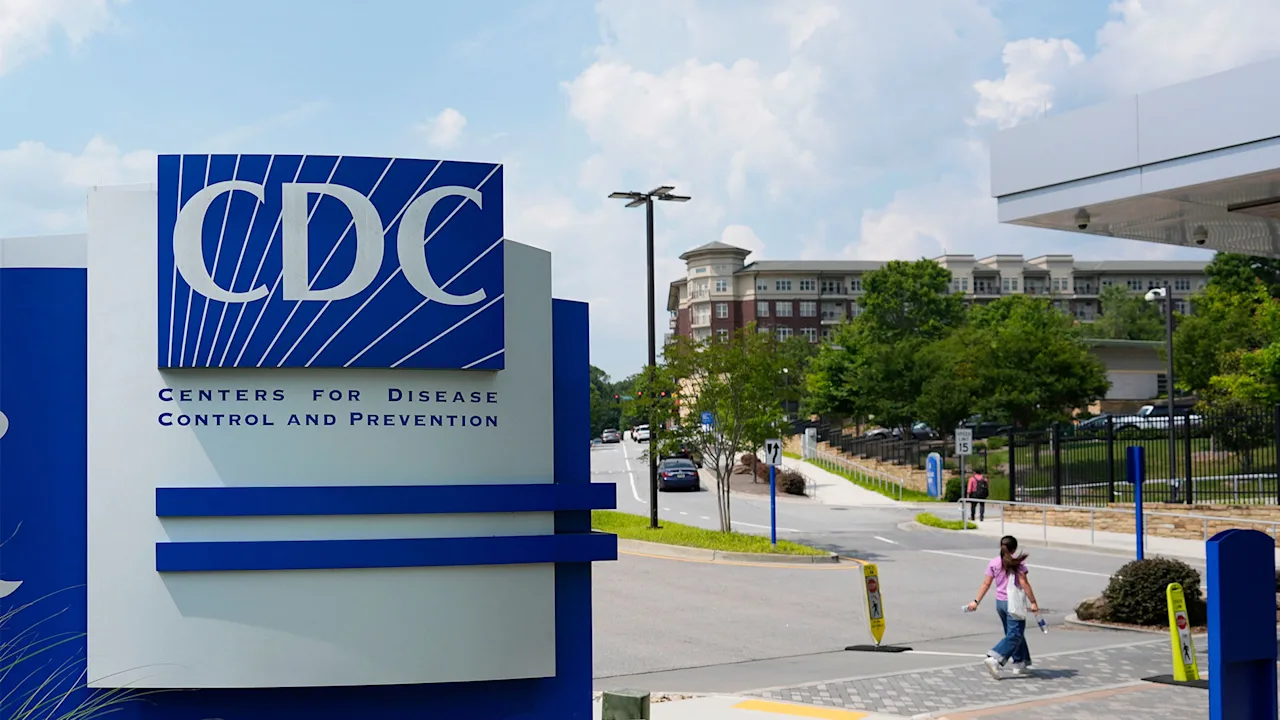Could this shot end Lyme disease forever?

The list of summertime scourges grows longer each year: wildfires, heat waves, floods. And we can now add to that a veritable infestation of biting, Lyme-disease-carrying ticks. Emergency room visits for tick bites in the Northeast are at their highest levels in at least five years. This June, the Centers for Disease Control and Prevention recorded 229 tick bites per every 100,000 visits to ERs around the Northeast, up from 167 bites per 100,000 visits a year earlier.
Nationwide, more than 89,000 cases of Lyme disease were reported to the CDC in 2023 through state health departments. But a CDC analysis of insurance claims suggests that actual cases of people seeking treatment for Lyme disease—transmitted by black-legged ticks infected with Borrelia burgdorferi bacteria—could be about 476,000 annually.
While most cases still occur in the Northeast, mid-Atlantic, and upper Midwest regions, climate change is expanding the ticks’ habitat, and the transmission season is getting longer, starting earlier each spring and stretching well into late fall. (Ticks can be active any time the temperature is above freezing.)
If you spot the symptoms—a target-like rash, fever, headache, extreme fatigue—early enough, treating Lyme disease with antibiotics has a high success rate. But Lyme disease is often undetected and untreated, and that can lead to long-term, chronic problems with the joints, heart, and nervous system.
The only prevention at the moment is covering up and wearing insect repellant when you’re in tick-y habitat, and carefully checking for ticks when you come back inside. Since the preadult tick nymphs that actually cause most Lyme disease are only about the size of a poppy seed, they’re easy to miss.
But a far more powerful form of protection is on the horizon. Nearly 25 years after the only approved vaccine against the disease was discontinued by its manufacturer, a handful of new ones are making their way through the approval process—and could hit the market as soon as next year.
The vaccine pipeline
The only Lyme disease vaccine previously marketed in the U.S. was approved by the Food and Drug Administration in 1998. Developed by SmithKline Beecham (which became GlaxoSmithKline), Lymerix was delivered in a series of three shots and was 75% effective in reducing new infections in clinical trials. But the company stopped selling the drug in 2002, after reports of possible side effects—never causally proven—and related lawsuits drove down demand.
It’s been a quiet space since then. In 2013, Baxter International announced promising data from an early trial of a vaccine candidate but never initiated a Phase 3 study.
Nearly a decade later, MassBiologics, a nonprofit that develops vaccines and other biologic products, explored a PrEP (pre-exposure prophylaxis) drug that used a monoclonal antibody—a human blood protein—to confer immediate protection from the disease. (Vaccines, by contrast, induce the recipient’s body to produce these antibodies, which can take weeks.) No trial results for that drug were ever published, though.
Today, the quest for a Lyme disease vaccine is a two-horse race—with a pretty clear favorite.
Moderna has two Lyme disease vaccine candidates in development, which like the company’s COVID-19 vaccine use mRNA to encode immunity-inducing antigens. The first, mRNA-1982, is designed to elicit antibodies against Borrelia burgdorferi, the most common culprit in U.S. Lyme disease cases. The second, mRNA-1975, aims to stimulate antibodies against four major species of Borrelia that cause Lyme disease in the U.S. and Europe. Phase 1/2 clinical trials—to determine safety, dosage, and initial efficacy—are currently “wrapping up,” according to a Moderna spokesperson.
Under Robert F. Kennedy Jr.’s term as head of the Department of Health and Human Services, Moderna has faced unscientific criticism of its mRNA-based vaccines. The HHs recently canceled more than $700 million in funding for the company’s mRNA-based late-stage avian flu vaccine candidate. That means there could be challenges ahead for an mRNA-based Lyme disease vaccine—regardless of what the trials show for its safety and efficacy.
Moderna did not say when it will release data from the Lyme vaccine study. (“We would prefer to hold off on any discussion until we have that data readout so we can speak more tangibly about the benefits,” Moderna said via email.)
The most advanced effort in the Lyme vaccine race is a collaboration between Pfizer and French drugmaker Valneva, whose vaccine candidate VLA15 is currently in Phase 3 trials—the furthest any company has progressed since Lymerix was pulled from the market.
The challenges of Lyme disease
Raphael Simon, senior director of bacterial vaccines at Pfizer, explains that developing a vaccine for Lyme disease presents unique challenges. “Bacteria are very different from viruses,” he says, speaking from Pfizer’s vaccine headquarters in Pearl River, New York. “Viruses are essentially discrete packages of information inside a delivery system. Bacteria are living things.”
The Borrelia bacteria that causes Lyme is different from the bacteria that cause food poisoning or other types of diseases, which are usually shaped like rods or small spheres. Borrelia is a kind of spirochete bacteria, which have a long spiral shape but can change form and employ other tools to evade the immune system and resist antibiotics.
To outflank the bacteria, Pfizer and Valneva’s VLA15—a so-called protein subunit vaccine—uses engineered antigens to target outer surface protein A (ospA), which the Lyme-causing bacteria expresses while inside the tick.
“The vaccine works inside of the tick to block transmission out of the tick into the person, which is actually rather unique in terms of the mechanism for how this vaccine works compared to any other vaccine,” Simon says.
When a tick starts to feed on an uninfected host, the bacteria travels from the insect’s midgut, through its version of a lymphatic system, and into the salivary glands, which are very large in a tick. From the salivary glands, the bacteria makes its way into the bite site, and then moves through the host’s skin and into other parts of the body.
But if a person has antibodies against the Borrelia bacteria in their blood, they will neutralize the bacteria before it can even get to the tick’s salivary glands. “It’s essentially trapped, and in some instances totally destroyed inside the tick’s midgut,” Simon explains.
A kid-safe vaccine
A key advancement of the Pfizer-Valneva vaccine is its broad coverage. Unlike the Lymerix vaccine, which protected only against the Borrellia strain found in North America, VLA15 is a six-valent vaccine designed to protect against all the main types of Borrelia found in both North America and Europe (where an estimated 129,000 Lyme disease cases are reported annually).
The clinical trials aim to address a notable gap by including participants ages 5 and older. Children represent a high-risk group for Lyme disease but have been left out of earlier vaccine research.
“The key risk for getting Lyme disease is being out in nature somewhere,” says Simon. “Ideally, kids spend a lot of time in nature, in parks. My kids are currently in summer camp in a forest somewhere. So there’s exposure that happens, and being able to have coverage [for] kids, as well, is really important.”
Simon says that Phase 3 trial is fully enrolled and “everything’s going as expected.” Pending a successful outcome, he says, “we’re looking to be able to submit for licensure at some point next year.” (The FDA granted VLA15 fast-track designation in July 2017, which expedites regulatory review.)
If approved, the vaccine—which is being tested as a three-injection series with an additional booster—can be made at scale using a well-established manufacturing technology.
Tall grass, here we come!
What's Your Reaction?
 Like
0
Like
0
 Dislike
0
Dislike
0
 Love
0
Love
0
 Funny
0
Funny
0
 Angry
0
Angry
0
 Sad
0
Sad
0
 Wow
0
Wow
0


























































































